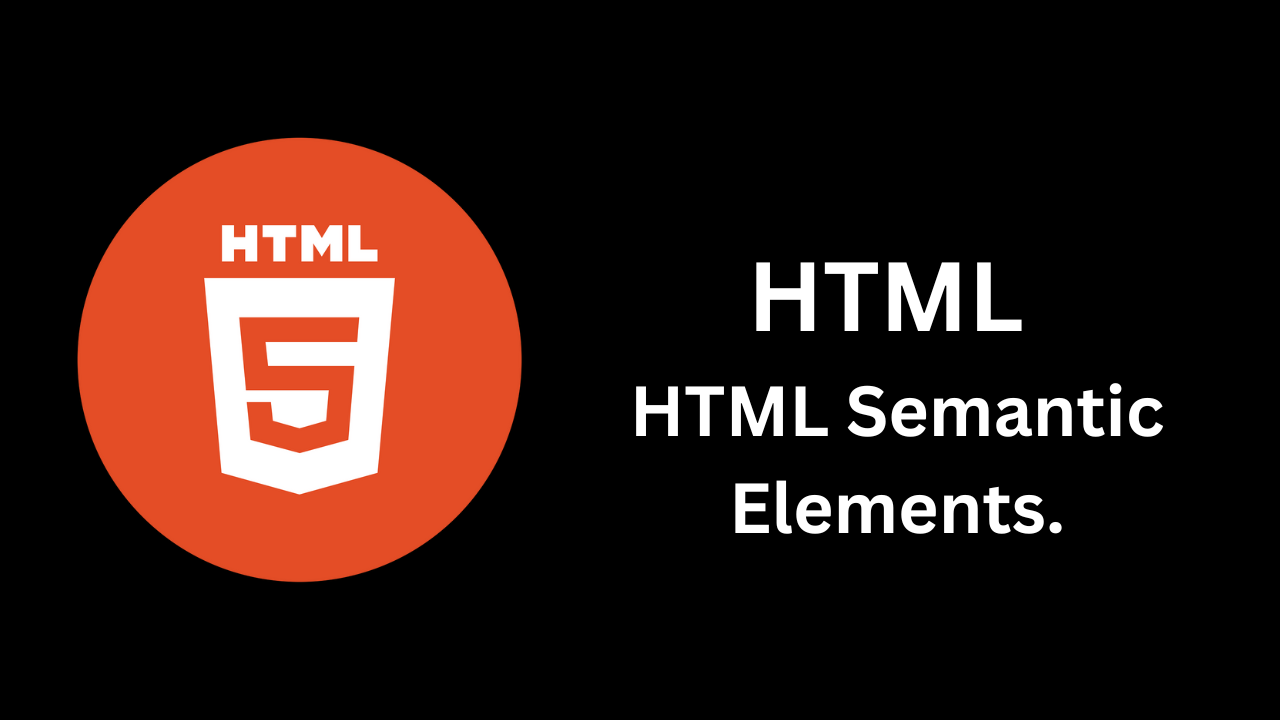Understanding HTML Semantic Elements
 Shivani Patel
Shivani Patel
In modern web development, using semantic HTML elements is essential for creating accessible, maintainable, and SEO-friendly web pages. Semantic elements clearly define their meaning and purpose, allowing both browsers and developers to better understand the structure and content of a webpage. In this blog post, we’ll explore what semantic elements are, why they matter, and how to use them effectively.
What Are Semantic Elements?
Semantic elements are HTML tags that convey meaning about the content they contain. Unlike generic elements like <div> and <span>, which only define a section of a page without providing any context, semantic elements describe the role and structure of the content. This makes it easier for search engines, assistive technologies, and developers to interpret the document's structure.
Why Use Semantic Elements?
Accessibility: Semantic elements improve accessibility for users with disabilities. Screen readers can navigate semantic elements more easily, providing a better experience for visually impaired users.
SEO Benefits: Search engines prioritize semantic markup, helping them understand the context and relevance of content. This can lead to improved search rankings.
Maintainability: Using clear and descriptive elements makes your code easier to read and maintain. This is especially beneficial when collaborating with other developers.
Styling and Layout: Semantic elements can be styled with CSS and manipulated with JavaScript just like any other HTML element, allowing for flexible design without sacrificing meaning.
Common Semantic Elements
Here’s a detailed look at some of the most commonly used semantic elements in HTML:
1. <header>
The <header> element represents introductory content or a group of navigational links. It typically contains the site logo, title, and main navigation.
Example:
<header>
<h1>My Website</h1>
<nav>
<ul>
<li><a href="#home">Home</a></li>
<li><a href="#about">About</a></li>
</ul>
</nav>
</header>
2. <nav>
The <nav> element is used for navigation links. It helps search engines and screen readers identify the navigation area of the page.
Example:
<nav>
<ul>
<li><a href="#services">Services</a></li>
<li><a href="#contact">Contact</a></li>
</ul>
</nav>
3. <main>
The <main> element represents the main content of the document. It should contain content that is unique to the page, excluding headers, footers, and sidebars.
Example:
<main>
<h2>Welcome to My Website</h2>
<p>This is where the main content goes.</p>
</main>
4. <section>
The <section> element is used to group related content. It typically includes a heading and can be used to divide the content into thematic areas.
Example:
<section>
<h2>About Us</h2>
<p>We are a company dedicated to...</p>
</section>
5. <article>
The <article> element represents a self-contained piece of content that could be distributed independently, such as a blog post or news article.
Example:
<article>
<h2>Latest News</h2>
<p>Today we launched...</p>
<footer>Published on: <time datetime="2023-10-01">October 1, 2023</time></footer>
</article>
6. <aside>
The <aside> element is used for content that is tangentially related to the main content. This could be sidebars, related links, or advertisements.
Example:
<aside>
<h2>Related Articles</h2>
<ul>
<li><a href="#article1">Article 1</a></li>
<li><a href="#article2">Article 2</a></li>
</ul>
</aside>
7. <footer>
The <footer> element contains information about its containing element, typically including author information, copyright details, and related links.
Example:
<footer>
<p>© 2023 My Website. All rights reserved.</p>
</footer>
8. <figure> and <figcaption>
The <figure> element is used for self-contained content, often with a caption provided by the <figcaption> element. This is useful for images, charts, or diagrams.
Example:
<figure>
<img src="image.jpg" alt="Description of image">
<figcaption>A description of the image.</figcaption>
</figure>
Best Practices for Using Semantic Elements
Use Elements Appropriately: Choose the right semantic element based on the content’s purpose. For instance, use
<article>for blog posts and<section>for groupings of related content.Maintain Clear Structure: Organize your HTML document logically with a clear hierarchy, using headings (
<h1>to<h6>) to define sections.Avoid Overuse of Generic Tags: Minimize the use of non-semantic elements like
<div>and<span>. Use semantic elements wherever possible to improve clarity and structure.Enhance Accessibility: Include alt text for images and ARIA roles where necessary to support users with disabilities.
Stay Updated: HTML is continuously evolving. Keep an eye on new semantic elements and best practices to ensure your code remains modern and effective.
Conclusion
Using semantic HTML elements is essential for creating well-structured, accessible, and SEO-friendly web pages. By employing elements like <header>, <nav>, <main>, <section>, <article>, <aside>, and <footer>, you can enhance the clarity and meaning of your content.
Embracing semantic HTML not only improves user experience but also aids in maintainability and search engine optimization. As you continue to develop your web projects, prioritize semantic markup to create engaging and effective websites. Happy coding!
Subscribe to my newsletter
Read articles from Shivani Patel directly inside your inbox. Subscribe to the newsletter, and don't miss out.
Written by
